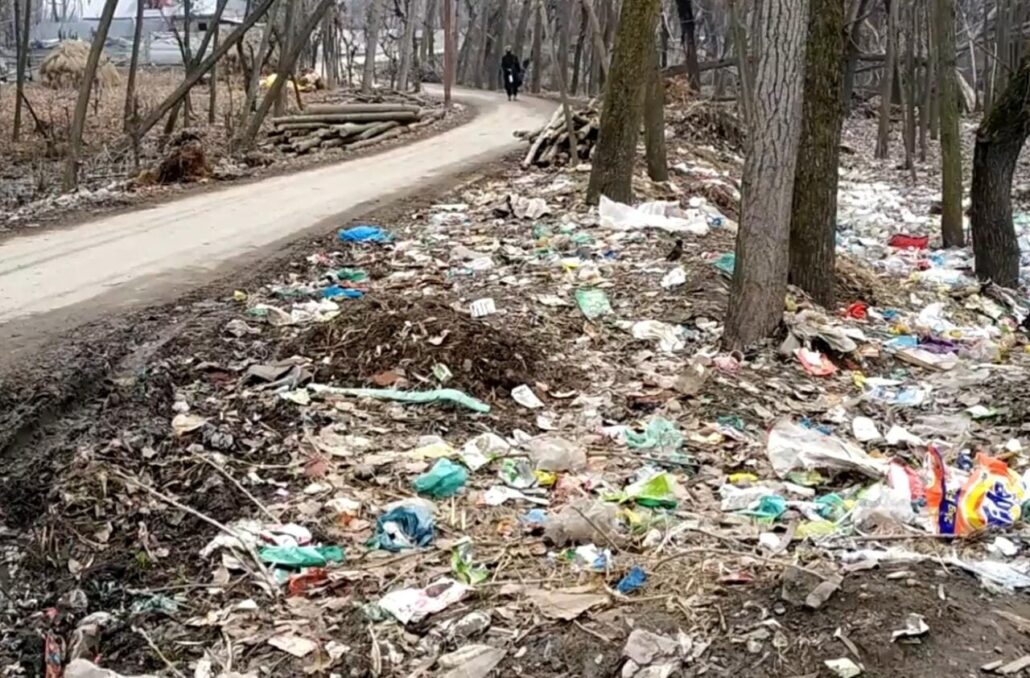
Approximately 114.57 tons of waste have been collected from the twin routes to the Amarnath shrine in the South Kashmir Himalayas since the annual pilgrimage began 10 days ago, officials reported on Monday.
According a report by Press Trust of India, this effort is part of innovative sanitation measures aimed at ensuring an eco-friendly yatra.
The 52-day annual pilgrimage to the holy cave shrine, featuring a naturally formed ice-shiva lingam at an altitude of 3,880 meters, commenced on June 29.
Pilgrims use two routes: the 48-kilometer Nunwan-Pahalgam route in Anantnag and the shorter but steeper 14-kilometer Baltal route in Ganderbal.
“So far, the cumulative figure of waste on both axes remains 114.57 tons. Total quantity of waste processed in tons is 85.72, and total inert waste generated in tons is 27.43,” an official stated. He added that the concerted efforts of waste management teams yielded impressive results in managing plastic, wet, and inert waste along the route.
In a dedicated effort to ensure an eco-friendly yatra, the Directorate of Rural Sanitation, under the Rural Development and Panchayati Raj Department, has adopted a novel approach to sanitation management.
Since June 27, more than 7,000 sanitation workers have been engaged to maintain cleanliness and uphold a zero-landfill policy along the twin routes.
The department has integrated a comprehensive strategy, focusing on men, machinery, mechanism, maintenance, monitoring, and motivation to achieve sustainable sanitation, the official said.
This holistic approach ensures efficient waste management and promotes a cleaner environment for the thousands of pilgrims participating in the yatra, he added.
The official detailed that 43.30 tons of plastic waste had been collected, efficiently bailed, and securely stacked at designated locations. The collected plastic waste will be supplied to registered recyclers to ensure proper management and minimize environmental impact.
Furthermore, the 43.85 tons of wet waste collected is being processed in composting beds, following best practices to produce high-quality manure.
This manure will be supplied to the agriculture department as an alternative to chemicals and fertilizers, promoting sustainable agricultural practices and organic farming.
Inert waste generation stood at 27.43 tons. Of this, 24 tons have been responsibly disposed of at the Achan dumping site of the Srinagar Municipal Corporation, and three tons have been loaded into compactors for further processing.
This systematic approach ensures that inert waste is managed effectively, reducing its environmental impact.
“These waste management initiatives are part of the broader commitment to maintaining the sanctity and cleanliness of the pilgrimage routes,” said Anoo Malhotra, Director General of Rural Sanitation.
She emphasized the collaborative efforts of various stakeholders, including waste management teams, local authorities, and volunteers, in achieving these milestones.
The Amarnath Yatra continues to uphold the principles of environmental stewardship, ensuring that the pilgrimage remains a memorable and sustainable experience for all devotees, Malhotra said.
The Directorate’s commitment to effective waste management highlights the dedication to preserving the natural beauty of the region and ensuring a sustainable pilgrimage experience. By processing all collected waste, the initiative sets a high standard for environmental conservation and responsible waste disposal.




